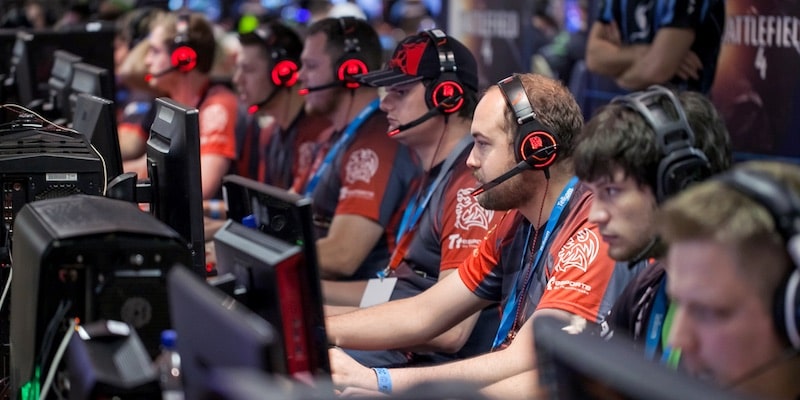We explain what a subculture is, its characteristics, and multiple examples. Also, how is it different from a counterculture.

What is a subculture?
A subculture is a more or less organized set of beliefs, attitudes and behaviors shared by a group that, through them, is distinguished from the rest of society traditional (understood as the “dominant culture”). This distinction can be given in lax terms or in radical terms.
The subcultures provide individuals with a sense of identity and belonging which can revolve around political, aesthetic, linguistic, philosophical, ethnic, religious, generational and/or consumer aspects. For example, the subculture otakuwhich revolves around the aesthetics of Japanese cartoons, is characterized by its love of manga and anime, as well as cosplay, and its tendency to value technology and online socialization.
The concept of subculture is similar to that of “urban tribes”, but they should not be used interchangeably. For an urban tribe to be considered a subculture, it must not only have a significant presence in one society, but also in other geographically distant ones. Furthermore, urban tribes are an essentially youthful phenomenon, which is often outgrown with the passage of time, while subcultures tend to be more stable and long-lasting.
Even so, it is important to consider that there is no formal and universally accepted definition of subculture in sociology and anthropology. On the contrary, the concept is used in a more or less similar way by scholars, so it is not always easy to determine which cases constitute a subculture and which do not.
Characteristics of a subculture
In very general terms, a subculture is characterized by the following:
- It covers people of different age ranges, different social conditions and different ethnic origins around a common identity that is distinguished from the majority culture (mainstream).
- Your own values are expressed in different aspects: clothing, the sense of aesthetics, political or ideological orientation, the use of language, the consumption model, among others.
- It may be more or less at odds with the dominant culture. In cases of more radical differentiation, one can speak of a counterculture.
- Its origin usually lies in some type of active resistance to authority, to generational mandates, to the government, to hegemonic discourses, etc.
Subculture and counterculture
The terms “subculture” and “counterculture” refer to different, but linked, sociological phenomena. Both refer to a culture born within a majority culture from which it is distinguished through different aspects (ideological, aesthetic, ideological, among others), but to different degrees. In this way, that subculture that not only differentiates itself, but also actively and systematically opposes the dominant culture, it can be considered a counterculture.
For example, the subculture punkborn in England in the 1970s, was countercultural in that it openly opposed the political values of the time. This gave rise to the so-called movement punklinked to anarchism, nihilism and fiercely opposed to the life expectations proposed by the establishment.
Examples of subculture

Some important examples of subculture are:
- The hippies. The hippie subculture was born in the United States in the 1960s. They were a subculture, a counterculture and a social movement, organized around the values of pacifism, libertarianism, free love and the rejection of consumerism. After their extinction as a massive youth movement, the legacy of the hippies continued in the hands of the subculture neo-hippiemuch less homogeneous and combative than the original.
- The punks. The punk subculture is one of the best known in the Western world. It was born in the United Kingdom in the 1970s under the slogan of “there is no future” (“there is no future”). Famous for their colorful crests, leather jackets and military-style boots, punks became linked to anarchism and developed their own musical style.
- The otakus. The subculture otaku (an honorific term in Japanese) emerged in the mid-1980s in Japan, and soon spread to the West during the following decade, hand in hand with the popularization of Japanese comics (manga) and cartoons (anime). Otakus are recognized for their loyalty to these cultural products, their love for cosplay (costumes of anime characters) and their devotion to Japanese culture and language.
- The hipsters. The hipster subculture is made up mostly of young bohemians from the upper-middle class. It was born in the first decade of the 21st century and reached its peak of popularity around 2010. Linked to independent music (indie) and the alternative culture, far from the predominant consumption, was characterized by the preference of vintage or retro, vegan or organic products, and ecological policies or green. For their clothing, they preferred checked clothing, black glasses and beards.
- The gamers. The gamer subculture is one of the most widespread subcultures in the contemporary world, and one of the least rigid in terms of appearance, aesthetics and personal style. Its central point is the love for consuming video games and the paraphernalia linked to them: clothing, merchandisingcollectibles, etc. Gamers invest a good part of their time in video games and staying up to date on events in this industry. Your level of commitment to this hobby It is variable, and adjusts to its own aesthetic canons: there are gamers retroelectronic athletes, occasional gamers, among others.
- the emos. The emo subculture (from English emotional“emotional”) emerged in the 1980s in the United States, especially around the music genre of hardcore punk. His moment of greatest popularity, however, was around the year 2000, when his dark clothes, his long, straight black hair, his made-up and pierced faces, and his melancholic attitude towards life became famous. Sensitive, shy and introverted, the emos were also linked to the musical style grunge and to the gothic (goth), to such an extent that they were also known by the latter term.
- The geeks. The subculture geek It emerged at the end of the 20th century mainly in the United States, and derives its name from a pejorative term, similar to “nerd”, which referred to introverted and studious people. However, it was later used exclusively for people fascinated by the world of technology and computing, which gave rise to the subculture geek either tech. Geeks tend to be introverted and cerebral, devoted to the Internet and new technologies. Their clothing tends to be informal, casual, and their imagination is strongly defined by chat, social networks and role-playing games.
- The furries. The furry subculture emerged in the United States in the late 1980s and its central element is the taste for certain types of fictional characters: anthropomorphic animals, generally mammals (canids, felids) represented in different roles. humans and in fantastic or science fiction settings. Many furries They are fond of disguises, in this case dressing up anthropomorphic animal suits, and they call themselves fursuiters (from English fur“fur”, and suit“suit”).
- The hooligans. The term “hooligan” emerged in the United Kingdom in the 19th century, but acquired its current meaning in the context of Anglo-Saxon league football matches, in which the particularly aggressive fans were famous for causing destruction, injuries and even injuries. robberies. The hooligan subculture is very dispersed, as each individual is a fan of a specific sports team. Even so, this subculture has been associated with racial hate crimes and xenophobia, as well as extreme political sentiments.
- The floggers. More than a subculture, floggers were an urban tribe born in Argentina in the late 2000s, which revolved around the website comwhere users could upload and comment on their photographs, generally self-portraits. The floggers were fans of electronic music, they dressed in more or less specific fashion codes and wore long, straight bangs on the side. They were considered close to metrosexualwith a marked tendency towards the cult of one's own image and towards total political and social apathy.
Continue with: Social group
References
- “Subculture, counterculture, urban tribes and youth cultures: homogenization or differentiation?” by Tania Arce Cortés in Argentine Journal of Sociology (vol. 6, no. 11) 2008, pp. 257-271.
- “Subculture, the meaning of style” by José Garriga Zucal at the National University of San Martín (Argentina).
- “Subculture” in The Encyclopaedia Britannica.





